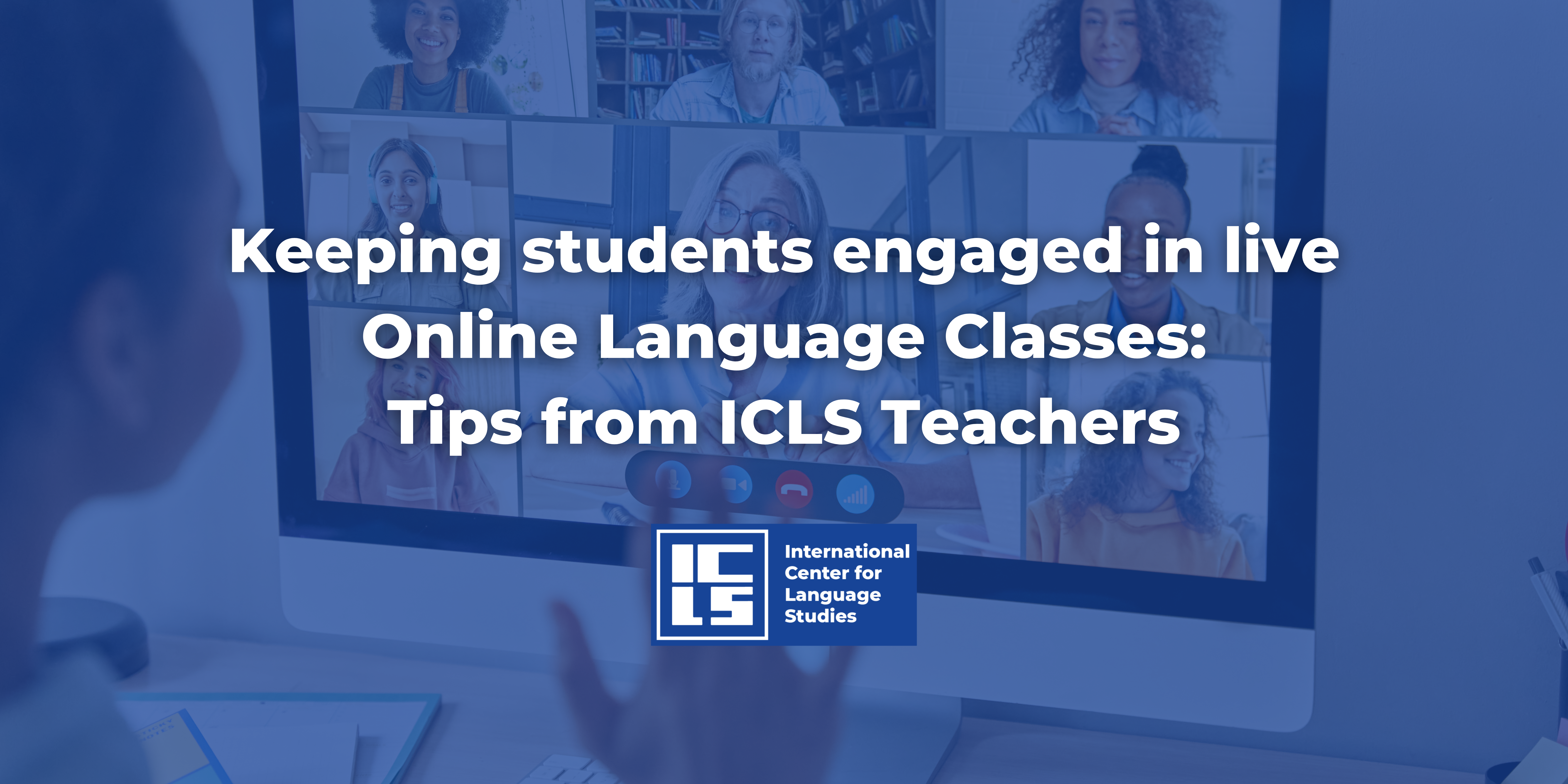Effective Teacher Tools Online for Engaging Language Learners

Keeping language students engaged in online live classes can be challenging, especially for students enrolled in intensive language classes. Even the most dedicated students experience Zoom fatigue at one point or another in synchronous meetings.
Virtual meetings can be cognitively taxing. Students have to work harder to read facial expressions and body language, reconcile the occasional disconnects between sound and images, and at times, troubleshoot technical problems.
As part of an in-house training course on how to effectively teach online, we asked ICLS teachers to share their best tips on keeping students engaged in live online classes. This infographic summarizes the many great answers they provided.
Keeping Students Engaged in Live Online Language Classes
Tips from ICLS Teachers
- Give students choices about class activities.
- Lighten up the mood. Share and discuss songs or funny videos in the target language that relate to the class topic.
- Break it down. Break information down into smaller pieces that are easier for students to process. Overwhelmed students will not be as engaged!
- Set up debates. Debates and discussions give students a chance to form and defend their opinions on issues that matter to them, or on issues that are controversial or complex.
- Consider student interests. Design classroom activities around student interests like gastronomy, art, sports, politics, music, and more.
- Rotate target skills. Alternate between speaking, listening, reading, and writing activities during class to maintain variety and exercise all skills.
- Use breakout rooms for group work.
- Keep it moving. Create activities that prompt students to move around inside their offices and homes. Ask them to look for a list of random objects, or even list the contents of their fridge!
- Use brain breaks. Some options may include a beautiful picture, a cartoon, a puzzle, or a tongue twister.
- Take short breaks.
- Use multimodal materials. Use a variety of multimodal materials in your lessons. Some options include music, images, videos, charts, infographics, cartoons, articles, and social media content.
- Conduct a poll and discuss the results as a class.
- Stretch it out. Lead a short stretching session in the target language.
- Use a name wheel or other method to randomize the order in which students answer questions in class.
- Give quick quizzes.
- Read the room. Students’ facial expressions will reflect their levels of engagement. Paying attention to them will help you adapt plans accordingly.
- Take camera breaks. Let students turn off their webcams during autonomous activities.
- Give positive, effective, and immediate feedback.
- Watch the clock. Time activities carefully.
- Be a tour guide. Focus the discussion on an area where students will live, study, or visit that speaks the target language, and take them on a short virtual tour! You can discuss culture, dialects, food, and any other points of interest.
- Find the root causes of boredom. If students seem disengaged, determine whether it is because they are fatigued, bored, or confused prior to taking action.
- Use strategic timing. Introduce challenging activities in the morning and avoid them immediately following lunch.
- Let students teach. Allow students to play teachers and take turns leading activities. Peer-to-peer learning is fun for everyone!
- Be engaged yourself!
Learn more about using teacher tools online (including ChatGPT for language teachers) at our Teacher PD tech workshops.


